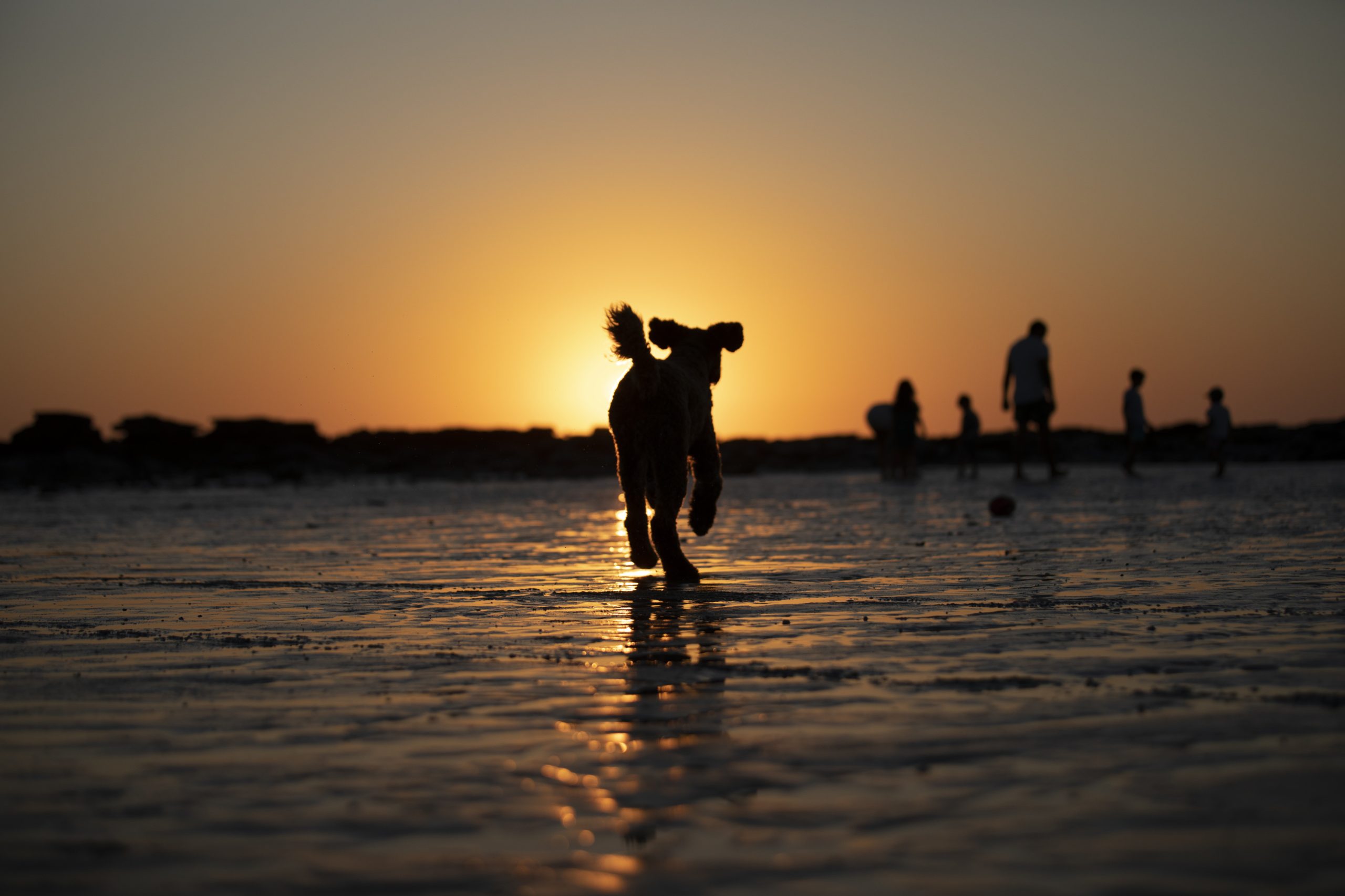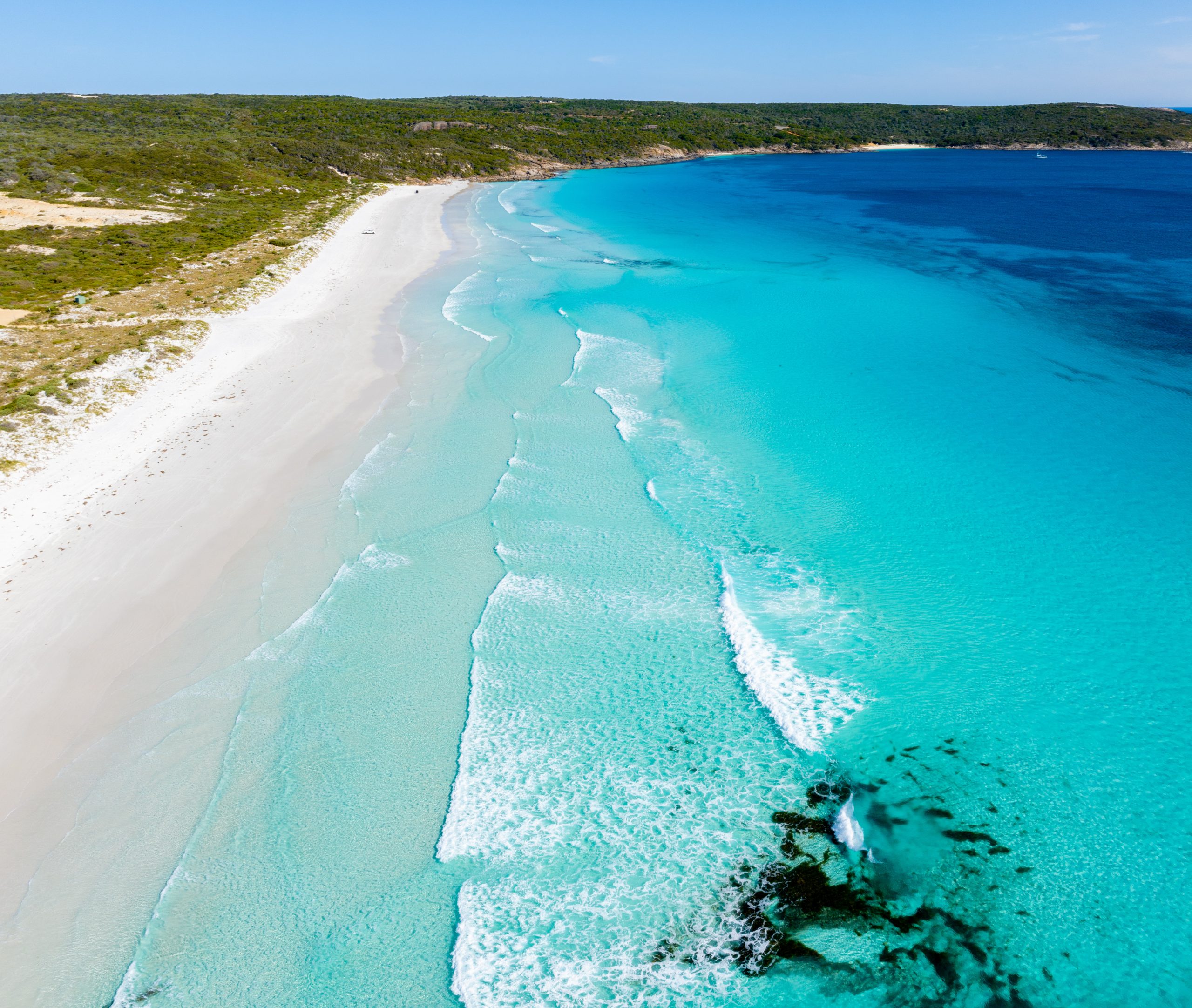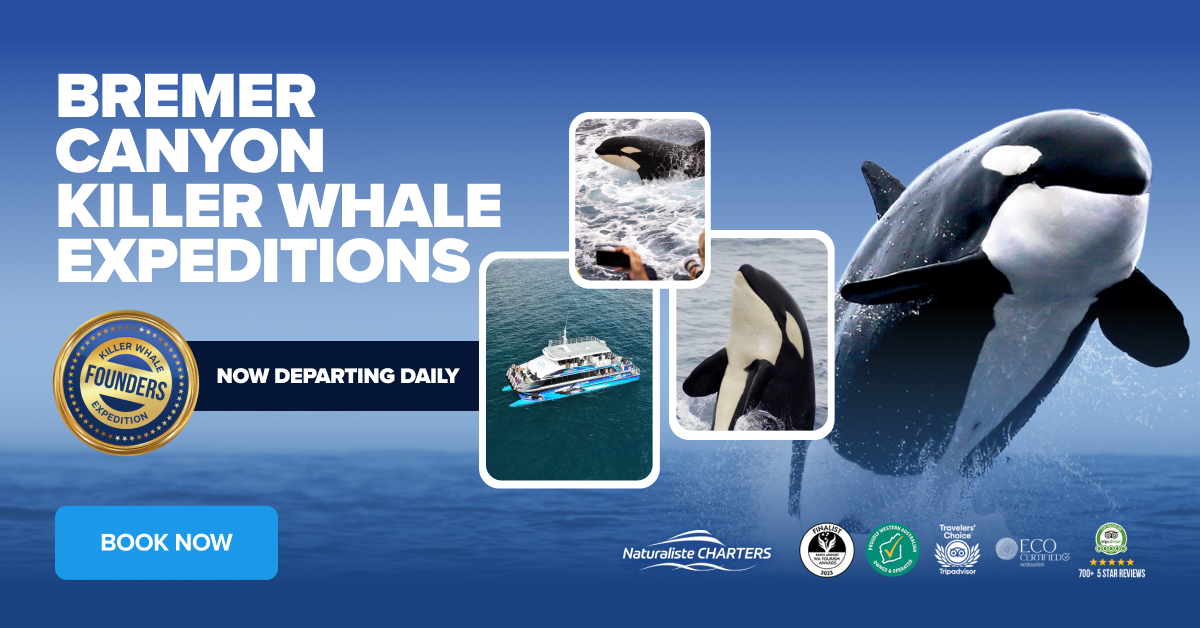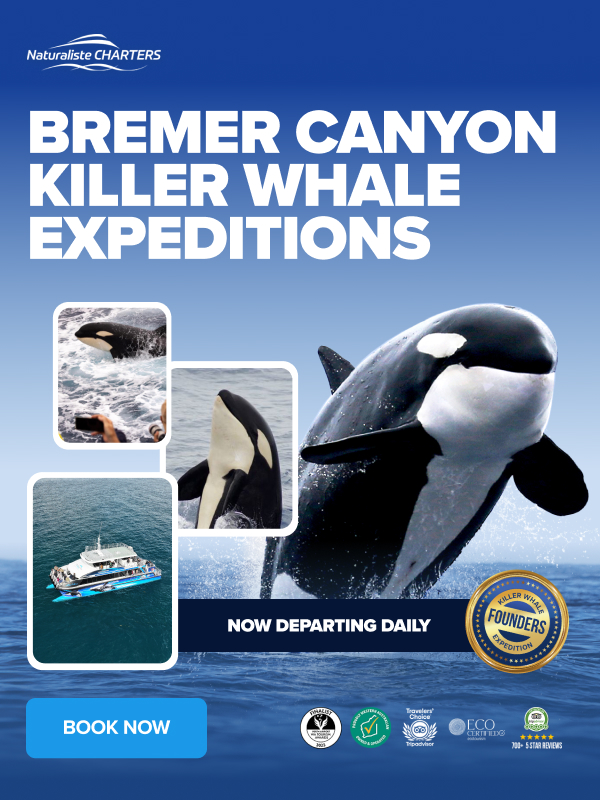As most know, blue whales are the largest animals to have EVER existed on our planet! Even bigger than ANY dinosaur!! Read on to learn more about why they’re larger than any land animal. Why they were hunted to the brink of extinction AND a few other fun blue whale facts. Tell these to your friends and family at your next dinner party!
How big do Blue whales grow?
Being an ocean dweller, blue whales have the luxury of buoyancy! Blue whales are capable of growing much larger than land animals as they don’t have the pressure of gravity inhibiting their growth. Their skeleton isn’t as reliant on being able to bear their weight. Hence, blue whales have the ability to grow to a whopping 33m in length. Weighing up to 200 tons!!!! Their close counterpart, the “pygmy” blue whale – which is the species we mainly encounter on our tours. It is STILL 25m in length and over 120 tons! To put that in perspective, a blue whale is as long as a school bus AND weighs as much as three! Their tongue alone weighs as much as an elephant (2 ton). Their heart is as heavy as your car!! The aorta is so large that you could physically crawl through it!!!
How long do Blue whales live?
These ocean giants don’t only grow big, they live LONG! The average age of a blue whale is estimated to be 80-90 years. With the oldest recorded animal being 110 years old!!! It’s truly incredible to “fathom”. Some of the blue whales alive today were witness to their friends being brutally slaughtered by whaling vessels over their lifetime.
FUN FACT TIME: Want to know how scientists determine the age of a whale?! WELL, blue whales earwax has growth lines similar to trees having growth rings!!! Every 6 months ear wax builds up in the ear canal (known as the earplug).This wax mainly serves to protect the ear canal and helps transmit soundwaves to the eardrum. Most importantly it determines the age of a whale!!!
How far can Blue whales communicate?
Speaking of sounds….blue whales emit one of the loudest noises of ANY animal on the planet! They truly are BIG in every way possible, even the moans, groans and calls they make. A blue whale can communicate with other whales up to 1000 km away! The sound is even louder than a jet plane taking off!!
Why are Blue whales endangered?
Over 360,000 blue whales were hunted during the whaling era. Decimating the population to near extinction! The baleen (comb-like structure on their top jaw) is made of keratin (like our nails/hair). This is used to trap microscopic krill in their gigantic mouths when they feed.
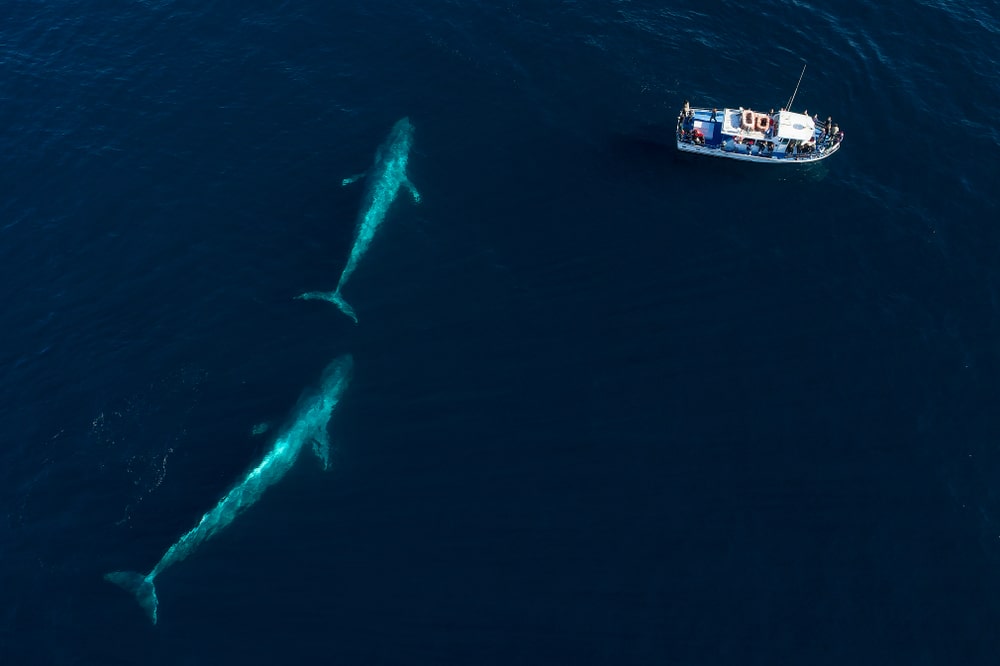
FUN FACT TIME: Did you know that blue whales can engulf their entire body weight of water in ONE mouthful while they’re feeding! That’s nearly 200 TONS of water!!! Blue whales are from the rorquals family which means they have long pleats down their throat. These expand like frogs when they feed. They use their baleen plates to filter the water out of their mouth. Ingesting up to 2 tons of krill from one gulp!!! So, technically they eat elephant sized meals!!!
Where can you spot Blue whales?
With the ability to hold their breath for almost two hours, blue whales commonly inhabit deep, dark abyssal waters. Diving hundreds of metres below the surface. For the world’s LARGEST animal, blue whales can be quite elusive! Areas where blue whales are commonly seen are often miles offshore. Amongst deep canyon systems that harbour large quantities of krill. Making it hard to enjoy their presence for long as they’re usually diving for long periods to feed. BUT there is an exception to this rule….and that’s in Dunsborough on Naturaliste Charters whale watching tours! Geographe Bay is one of the ONLY places in the WORLD where you can regularly encounter blue whales within 100-500m of the coast. They are very easy to see in the crystal clear waters as shallow as 4m!!
On tour during October, often close to shore and JUST below the surface is where we witness the world’s LARGEST animals. Cruising within close proximity past boats, coastal walkers, kayakers and surfers, often without notice!!!! For an 180 tonne animal they can be EXTREMELY elusive unless you have a trained eye. If you know what to look for like our amazing land-based monitors and on experienced crew!!!
During our Dunsborough whale watching season (Sept-Nov), similarly to humpbacks. The BLUE whales are making their annual southern migration back down our coastline all the way from one of their calving grounds. Which is all the way up in Timor! These torpedo-like animals move through the waters like missiles travelling at speeds of up to 50 km/hr!!! However, on tour we get to cruise alongside these magnificent creatures AND at times their calves!!!!! Which might I add, are born at a whopping 3 tons and 4m in length!!!!
How do Blue whales benefit the ecosystem?
The blue whales along with ALL great whales. They provide highly important ecosystem services whilst simultaneously acting as enormous carbon sequesters for the entire world!! Each great whale sequesters 33 tons of CO2 on average taking that carbon out of the atmosphere for centuries! A tree meanwhile, absorbs only up to 48 pounds of CO2 each year. What does this mean for us?
Whilst whales excrete waste up and down the water column and throughout our oceans on their migration. They pump vital nutrients from the depths to the surface that are essential for phytoplankton growth (GO WHALE POO!)
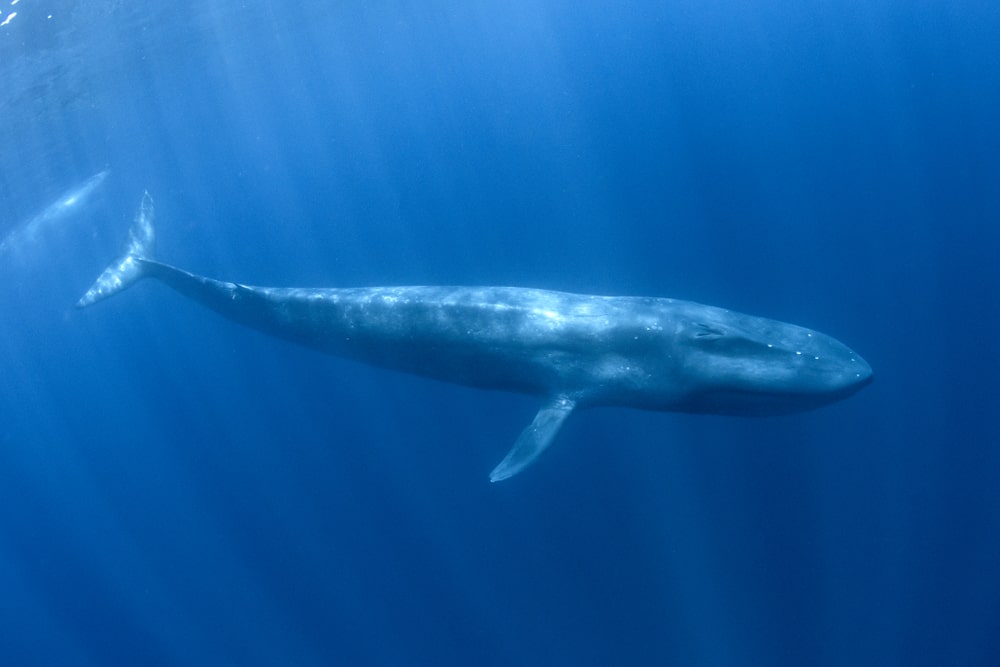
FUN FACT TIME: Phytoplankton contribute to 50% of ALL oxygen to our atmosphere, therefore….you can thank whale poo for every second breath you take!!!!
At a minimum, even a 1% increase in phytoplankton productivity thanks to whale activity would capture HUNDREDS of millions of tons of additional CO2 a year. This is equivalent to 2 million mature trees!!!! Therefore, more whales = more oxygen AND increased ocean productivity that’ll support the entire ecosystem!!!
WOW, as if we didn’t already LOVE these animals enough! We hope you enjoyed our Blue whale facts and be sure to join us on our whale watching tour throughout October – November. Take a chance at encountering the world’s LARGEST animal. See them in the clearest, calmest and closest waters along our beautiful southwest coastline! Book through our website or call us on (08) 9750 5500 for more information!

